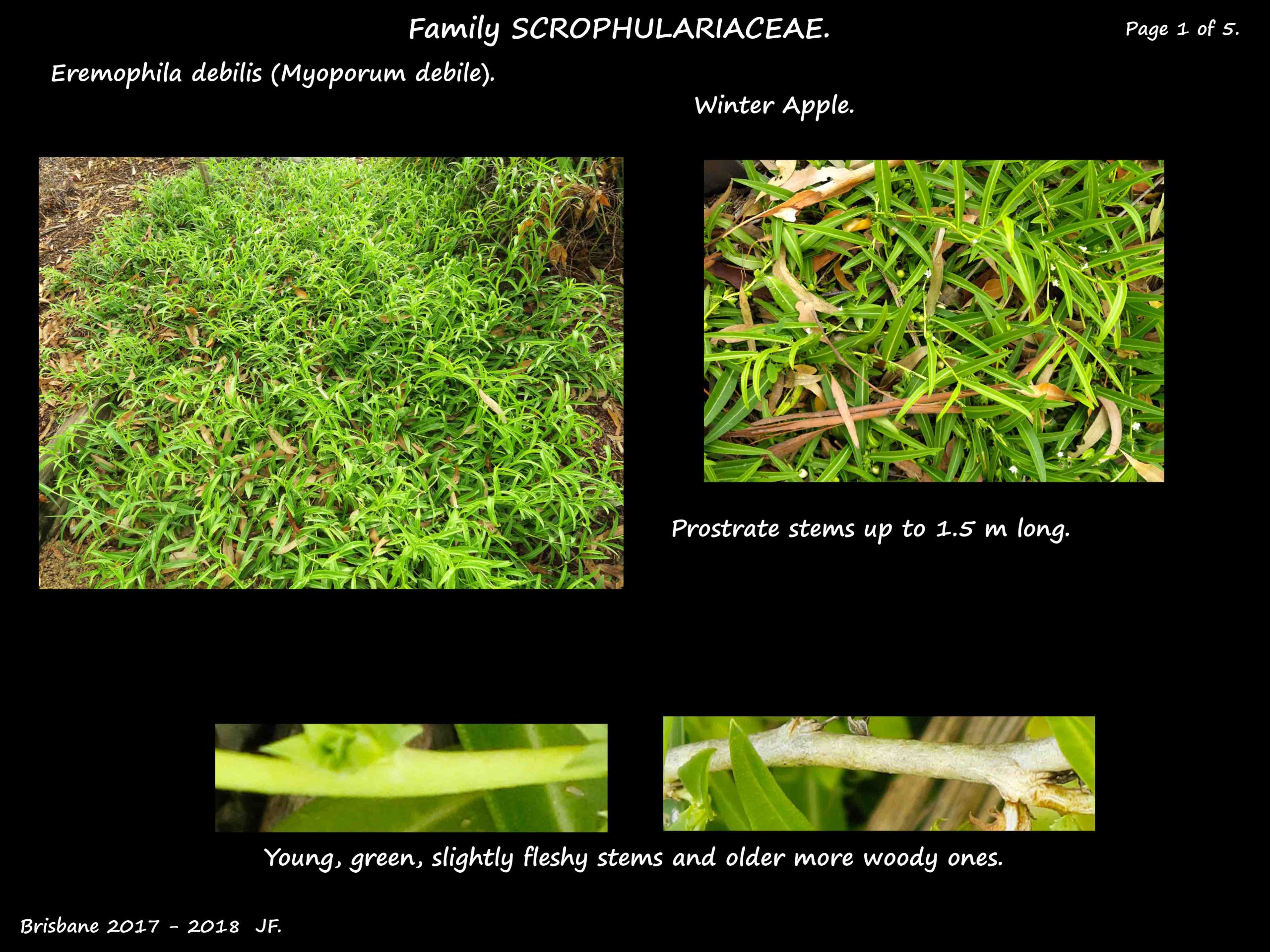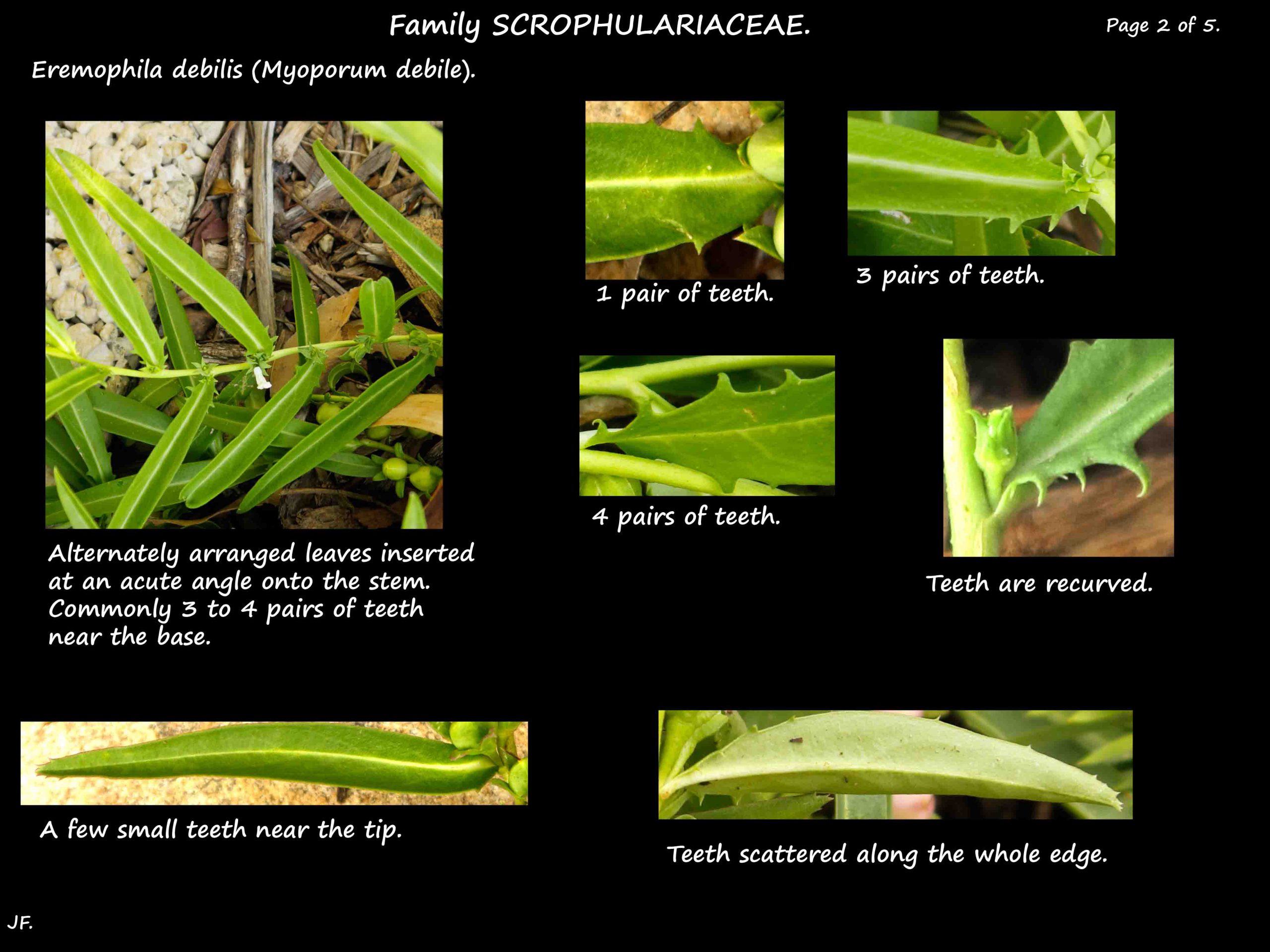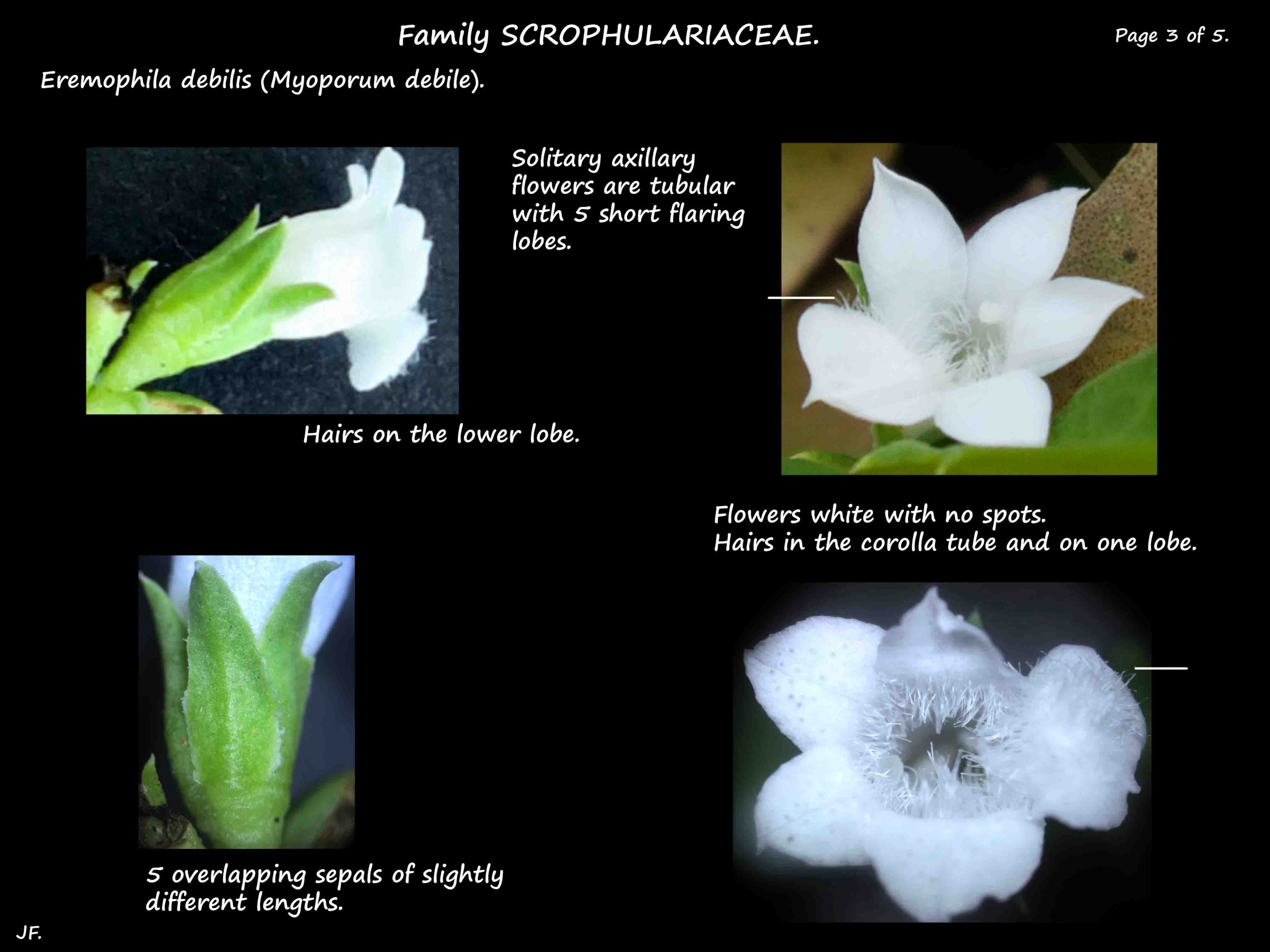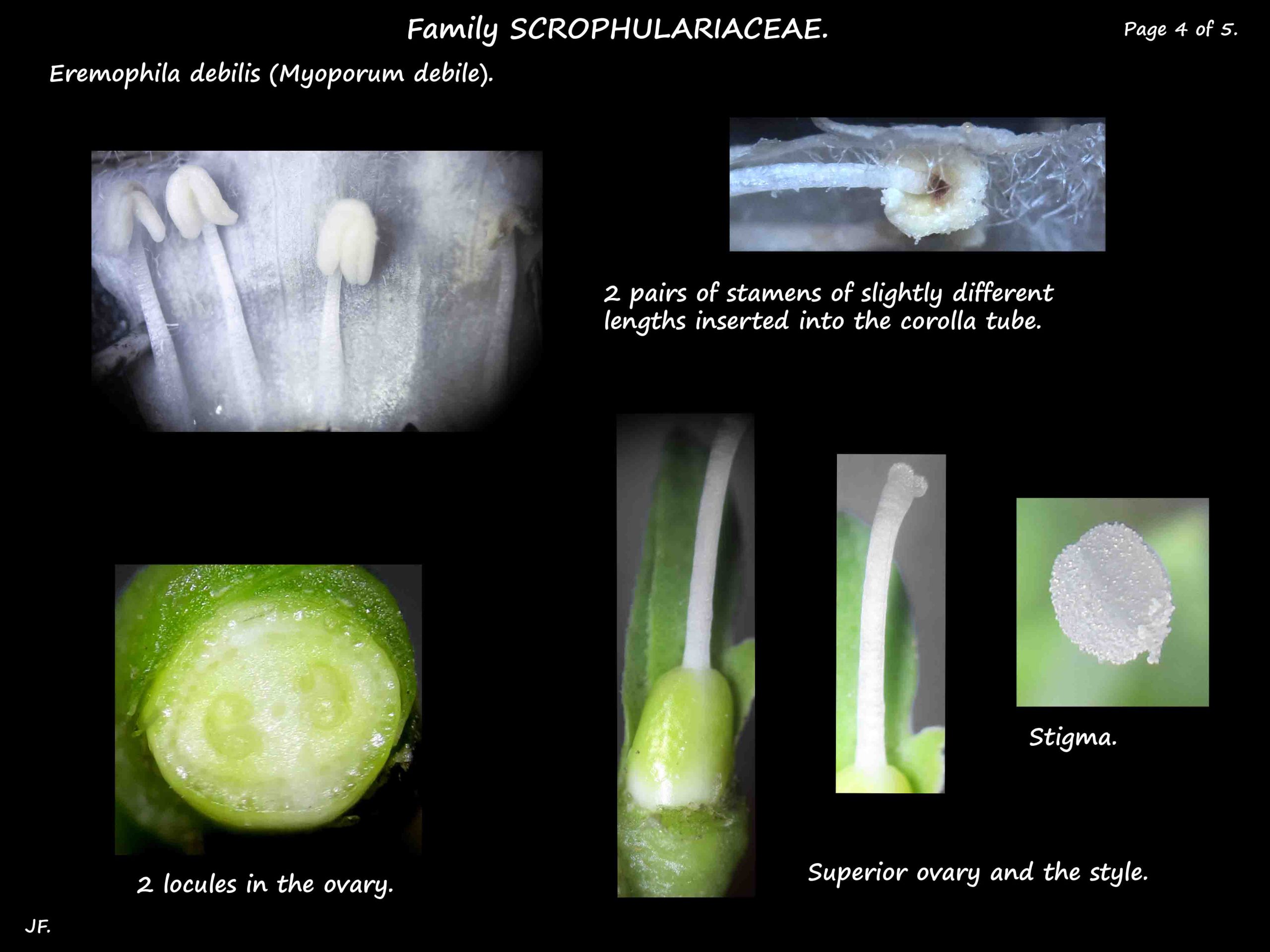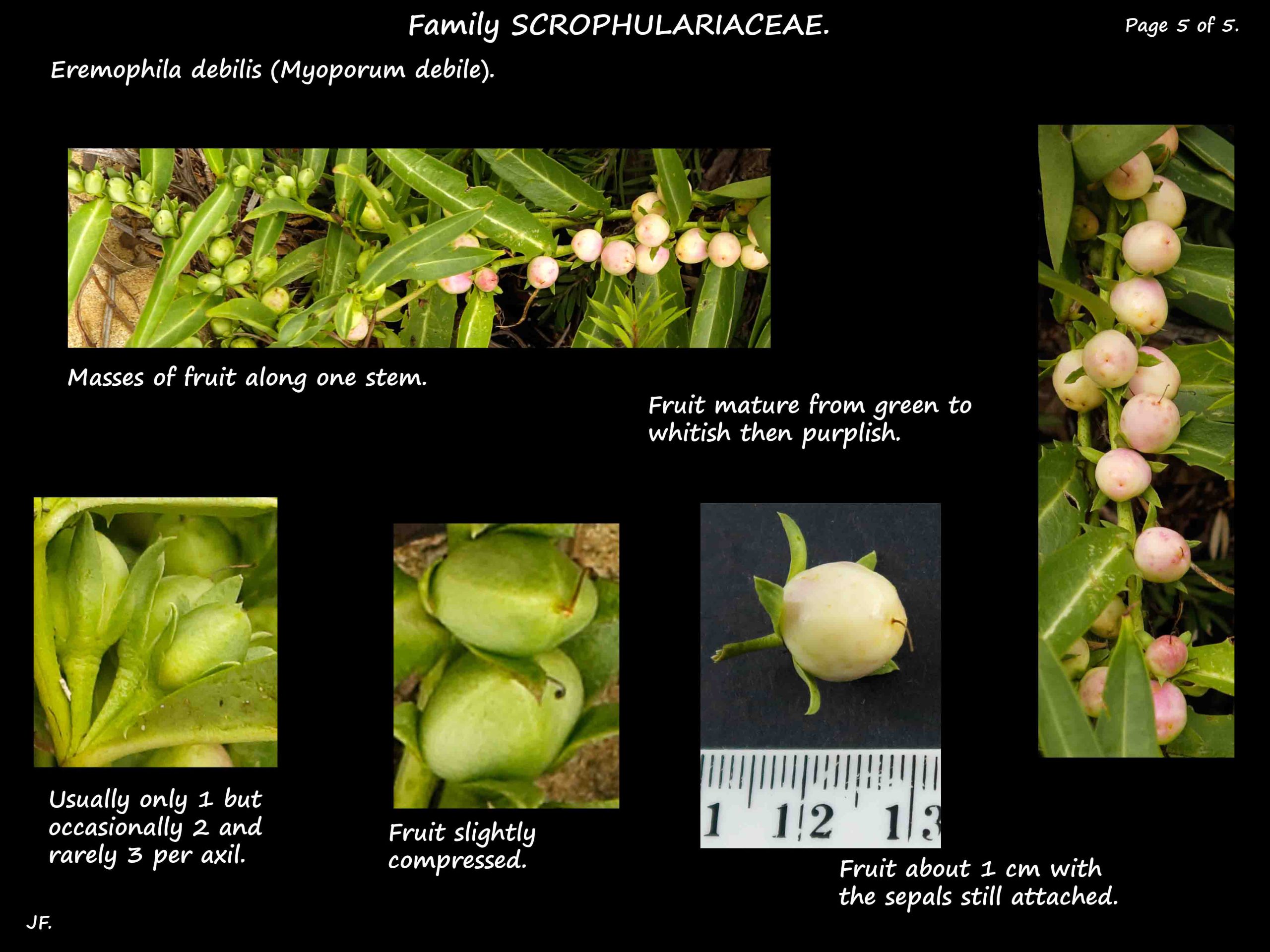Eremophila debilis.
In Family Scrophulariaceae it was previously known as Myoporum debile and is still often sold under that name.
The Winter Apple, endemic in Queensland, is often seen in cultivation.
The prostrate, slightly fleshy stems, mostly 1 to 1.5 m long, can root where they touch the ground.
Short, upright stems to 0.5 to 1 m high make it resemble a low shrub.
Branches may have small, faint or obvious nodules.
The dense, glossy green leaves are alternately arranged on short, or no, petioles.
The blade is mostly lance-shaped to elliptic but some are narrow or ovate.
They are inserted onto the stems at an acute angle and curve up slightly.
They are commonly 3 to 8 (2 – 12) cm long by 1 to 2 (0.5 – 2.5) cm wide.
The edges often have 3 to 4 pairs of recurved teeth near the base.
Others have some small teeth near the tip and rarely the edge is smooth.
Axilllary inflorescences are usually a single flower but sometimes 2 or rarely 3.
On stalks 3.5 to 7 mm long they are concentrated near the branch ends.
Flowers are from 0.4 to 1.2 cm long and 1 cm across.
They are commonly white and may be tinged with pale pink or purple or occasionally blue.
There are no spots.
The calyx has 5 green sepals, usually lance-shaped and of slightly different sizes.
The overlapping sepals are 5 to 13 mm long and up to 4.5 mm wide with a pointed tip.
They can be smooth or slightly nodular.
The corolla has 5 petals with their bases fused to form a tube with flaring lobes.
The outer surface is usually smooth but there are hairs internally.
The 4 stamens are inserted into the corolla tube and do not extend beyond it.
The anthers open via long slits.
The superior ovary has 2 locules and a single style with a bilobed stigma.
The roughly 1 cm fruit ripen from green to whitish then a reddish-purple.
J.F.
